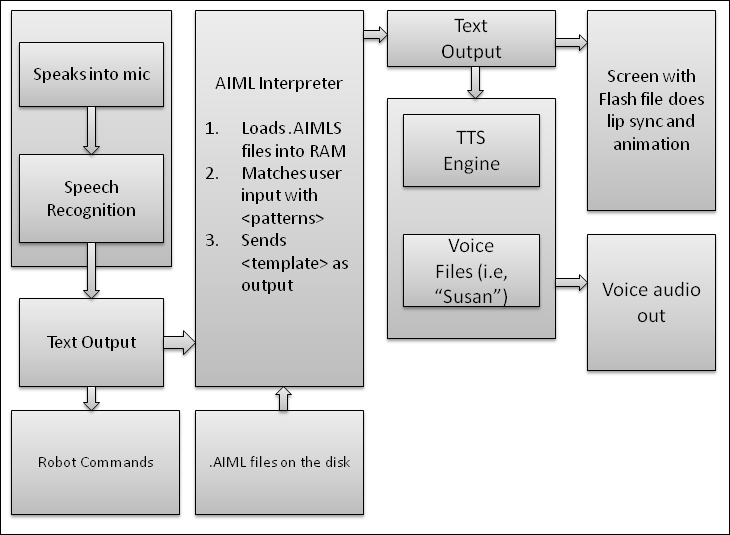Block diagram of the communication system in ChefBot
The following block diagram shows how ChefBot communicates and interacts with humans using speech:

Robot communication block diagram
The robot can convert human speech to text using the speech recognition system and can convert textual data to speech using speech synthesis. We have already discussed these processes in the previous chapter. The AI we will discuss here is contained in between these two blocks. After receiving the text data from a speech to text conversion stage, it is sent to the AIML interpreter. The AIML interpreter retrieves the most meaningful reply from the AIML dataset. The dataset of the robot can be anything, such as food details, casual talks, and so on. The user can write any kind of pattern in AIML files. In the case of ChefBot, the user can ask about food details or can command the robot to do something. The robot command system checks whether the converted text is a command to the robot. If it's a command, it...
























































